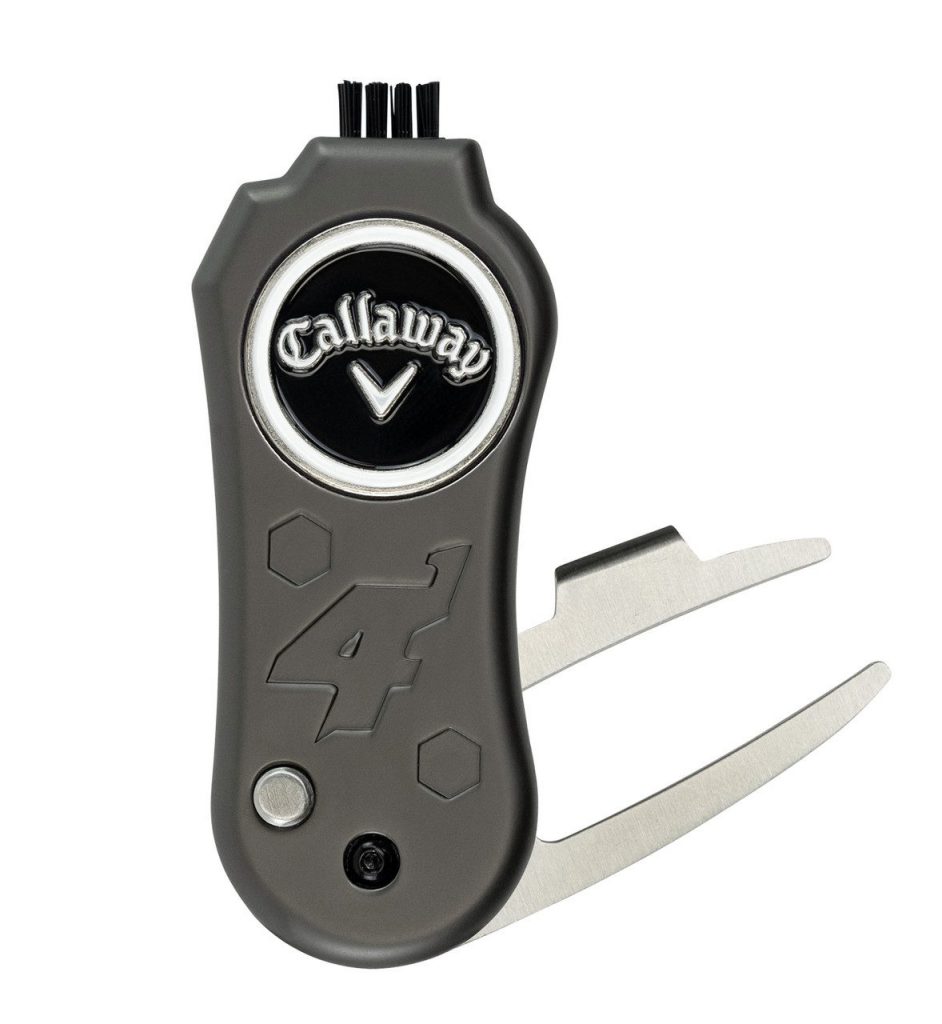How to Use a Golf Divot Tool (Without Looking Like a Rookie)
Ah, the humble golf divot tool!
You finally stick one close, but as you walk up, there it is, a moon crater where your ball landed. Time to fix the evidence.
Here’s the thing: fixing your ball mark isn’t just good manners, it’s essential for keeping greens healthy and playable. Nobody likes putting through a scarred-up green, and honestly, there’s something satisfying about leaving the course better than you found it. Call it golf karma, but the putts seem to roll truer when you’ve done your part.

What Is a Divot Tool Anyway?
A divot tool (technically a “pitch mark repairer” for the equipment nerds) is that small, pronged gadget lurking in your pocket alongside tees and ball markers. You’ll find them in every shape and style, from classic two-pronged forks to sleek switchblades that snap open like a mini pocketknife. Mine’s a basic one I got free at a tournament, but I’ve seen some with initials engraved and built-in ball markers. Fancy tools for simple jobs.
Read More:
- Golf Accessories Every Female Golfer Should Have in Her Bag
- Must-Have Golf Accessories for a Stress-Free Holiday Getaway
- The Hidden Costs of Golf Accessories: Where Are Golfers Spending the Most?
Despite its simple design, this little tool is your ticket to proper golf etiquette, and surprisingly, plenty of golfers still don’t know how to use it correctly. I used to be the guy who thought stabbing the green and lifting was right. Spoiler: it wasn’t.
The Right Way to Use It
Here’s the technique that’ll have you fixing marks like a tour pro:
- Insert the prongs just outside the edge of the ball mark, not in the center of the depression. Think of it like working around the rim of a crater.
- Gently push the turf inward toward the center. This is the crucial bit: you’re coaxing the grass back together, not prying it up. Work your way around the mark, nudging the edges toward the middle.
- Use your putter to gently press it flat. No force needed, just enough to level it out. Like icing a cake, not hammering a nail.
Remember: Don’t pop it up like a gopher, this isn’t whack-a-mole. The goal is to push horizontally, not vertically.
Common Mistakes to Avoid
The Upward Yank: Sticking the tool in the center and yanking upward just rips the roots. Don’t be that guy. This tears the grass and creates a dead spot that’ll haunt the green for weeks.
The Vanisher: Fixing your mark isn’t optional. Don’t ghost your responsibilities. Walking away from your mark is the golf equivalent of not returning your cart.
The Turf Assassin: Angry repairs just leave dead scars. Treat the green like a living thing, because it is. I’ve seen guys attack a ball mark like they’re trying to dig to China. The green remembers.
Read Even More:
- Lost Golf Courses: Forgotten Fairways and Where They Are Now
- Beyond the Scorecard: 5 Unusual Golf Courses Around the World
- Reimagining Golf: If You Owned a Golf Course
Pro Tips for Polite Golfers
Want to really impress the group ahead? Fix yours and grab one more while you’re at it. Think of it like cleaning up after your dog… and someone else’s. The course stays cleaner, and nobody knows it was you. Hero stuff.
Do it quickly and confidently. No need to make a production of it. I’ve played with guys who turn divot repair into a five-minute ceremony. Fix, tap, move on.
If you can’t find your exact mark, fix the nearest one you see. The green doesn’t care about ownership. It just wants to heal.
The Bottom Line
It only takes 10 seconds to fix a divot, but it saves the green (and your reputation). A properly repaired ball mark heals in 24 hours. An ignored one? That’s a three-week eyesore that every golfer after you has to shoot through.
Hit it close, fix your crater, and walk away knowing you just made the course a little better. You don’t have to be the best putter, but you can be the best green fixer. That counts for something.
Now get out there and show those greens some love. 🏌🏻
👉 Try the Golf Handicap Calculator here
Writer/Editor: Danny Kapp is a passionate golf enthusiast and a 9-year veteran golf blog writer for Rock Bottom Golf, offering his unique perspective on the game. With a keen eye for detail, he covers various aspects of golf, ranging from technical insights to the latest trends in golf equipment and golf technology.








